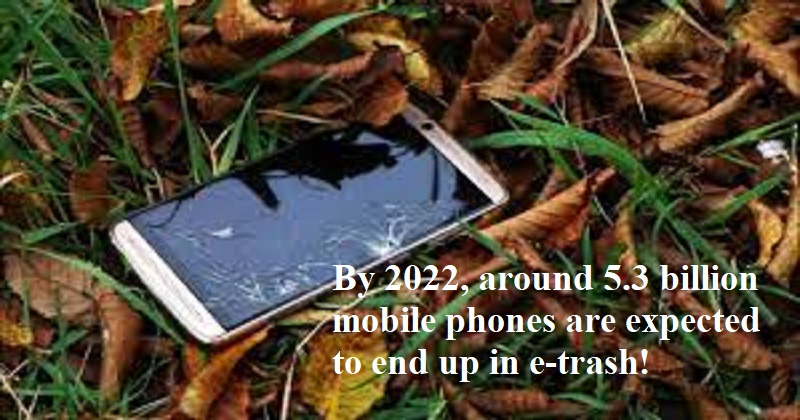
Waste Electrical and Electronic Equipment (WEEE) estimates that 5.3 billion phones will be included in e-waste by the end of 2022. The estimate from the forum, which is based on information on world commerce, highlights the rising issue of e-waste. Our old smartphones are treasured keepsakes for many of us. However, by doing that, we are ignoring the fact that the phone contains a number of valuable minerals that can be extracted from it and used in recycling.
Then, in addition to other resources, mining is required for things like copper in wire and cobalt in rechargeable batteries. ‘One of the electrical gadgets that causes us the most anxiety is smartphones’. The BBC cited WEEE director general Pascal Leroy as stating, ‘People tend to not realise that all these seemingly minor elements have a lot of value and collectively at a worldwide level represent tremendous quantities’.
There are already more than 16 billion phones in use globally, at least a third of which are no longer in use in Europe. The WEEE has drawn attention to the dire situation of e-waste accumulation, which is not simply coming from phones. According to the organisation, mobile phones make up a very small portion of the 44.48 million tonnes of worldwide electronic garbage that is produced each year but isn’t recycled.
By 2030, washing machines, toasters, tablets, PCs, and global positioning system (GPS) gadgets would contribute 74 million tonnes of electronic garbage annually, according to the study. The study also discovered that five kilogrammes of electronic equipment are presently hoarded by each individual in a typical European family, which is astounding. But due to the enormous expense, e-waste will never be collected freely. ‘Legislation is crucial for this reason’, according to Leroy.
According to Magdalena Charytanowicz of the WEEE, ‘These devices offer many important resources that can be used in the production of new electronic devices or other equipment, such as wind turbines, electric car batteries, or solar panels – all essential for the green, digital transition to low-carbon societies’. More than a thousand tonnes of EU electronic trash are anticipated to be reduced annually as a result of the EU regulation mandating USB-C as the single charging standard for all new smartphones, tablets, and cameras starting in late 2024. Additionally, it will result in yearly savings of at least 200 million euros ($195 million).

Post Your Comments